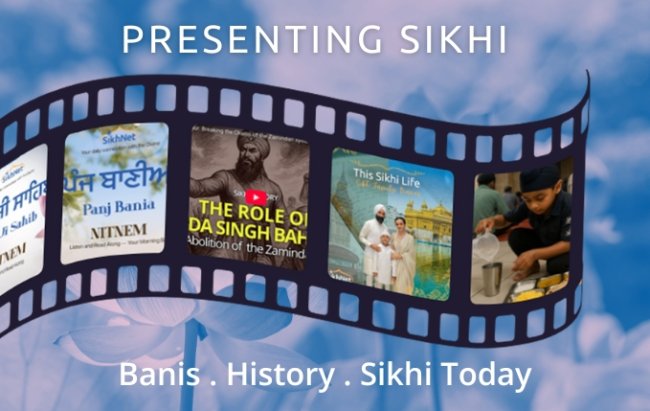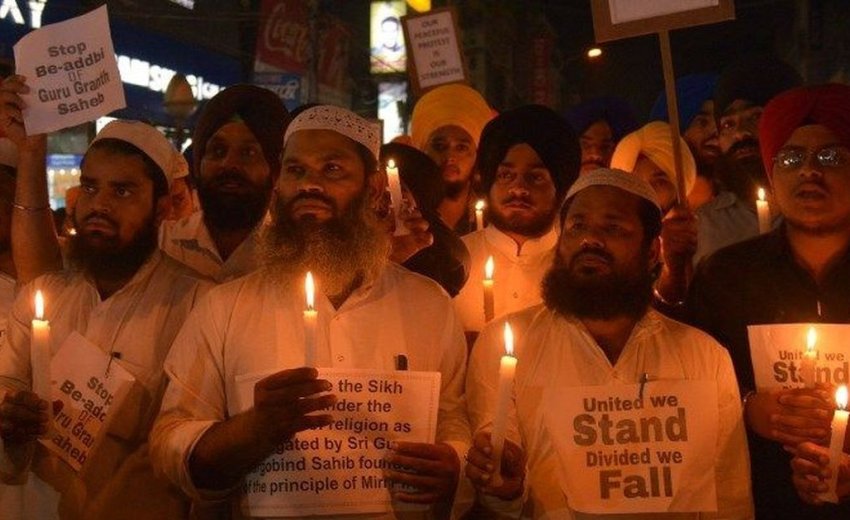Tibba Nanaksar
There is no doubt that this Pakistani village lives up to its name: it is located on a mound (a tibba in Punjabi), and on its summit is the gurudwara dedicated to Guru Nanak.
The gurudwara, a lone building enclosed in a small space, was recently renovated and painted pink. There were a few rooms around the gurudwara that, before Partition, used to serve as rooms for pilgrims. Before Pakistan was carved out of India in 1947, the gurudwara complex extended down to the base of the mound and included a sacred pond and several rooms. However, these structures were taken over in the years after Partition, and the main shrine was left in a crumbling condition before receiving a recent facelift as part of the State's initiative to restore Sikh gurudwaras all over the nation.
History of Tibba Nanaksar
It is believed that during one of his numerous journeys around India and beyond, Guru Nanak was accompanied by his Muslim friend Bhai Mardana when he ended up in Pakpattan, which is now a part of Pakistan’s Punjab province. There, he met Sheikh Ibrahim, the spiritual descendant of Baba Farid and the guardian of the shrine. Nanak was introduced to the works of Baba Farid, a Sufi mystic, who was believed to be the first classical poet in Punjabi, through his interactions with Sheikh Ibrahim. In keeping with tradition, Sheikh Ibrahim presented Baba Farid’s writings to Guru Nanak atop this mound.
The poetry of the Sufi saint had a major influence on Guru Nanak, who used several symbols similar to those espoused by Baba Farid. Guru Nanak is regarded as the second classical poet in the Punjabi literary tradition. The Guru Granth Sahib is considered the living and eternal Guru for the Sikhs. Baba Farid's poetry made its way to the Guru Granth Sahib through Guru Nanak. Baba Farid pioneered the use of the Punjabi language for literary purposes by writing his mystical poetry – known as Sufiana Kalam – in Punjabi, rather than Persian as was the norm of the day. His ethos was considered so integral to Sikhism that many of his verses feature in the ‘Guru Granth Sahib, the faith’s most sacred scripture. The Guru Granth Sahib contains four shabads and 112 shaloks of Baba Farid. Today, the sole existing written source for Baba Farid's poetry is the Sikh holy book.
The poetry of Baba Farid perhaps did not require written means to survive - it would have been passed down from one generation to the next. Nevertheless, the poems may have faded from memory after journeying through generations, some words forgotten, and new ones added. Baba Farid, however, found a permanent place in the world of the written word through Guru Nanak, and some subsequent Sikh leaders, Guru Arjan, and Guru Gobind Singh.
Divine writings
The Guru Granth Sahib, however, is much more than just a piece of literature. There is a divine aspect to each word in the Granth. The tenth Sikh Guru, Guru Gobind Singh said that the Guru Granth Sahib would be his successor. The letters in the book would no longer form secular words to be instilled with meaning through human interpretation but would be divine themselves.
The mere utterance of these words provides meaning to human existence. The words of Baba Farid became one with divinity when they entered the Granth Sahib. In the Sikh tradition, this was the highest honor bestowed upon anyone, and it was given to a Muslim saint.
In fact, Baba Farid is not the first Muslim who has been elevated to this level. In defiance of all customs, Nanak's lifelong companion, Bhai Mardana, who played the rubab, a stringed instrument, as Nanak sang his songs, also finds a place in the Guru Granth Sahib. Even today, the Mirasi caste, into which Bhai Mardana was born, is despised in traditional Punjab society, and the word is often used as a slur. Mirasis, which literally translates as "keepers of tradition," historically recorded and recited the heroic deeds of aristocrats and landlords. Due to their expertise in music, they were also associated with Kanjars, the professional prostitutes. While the Kanjar danced, the Mirasi played music. As a result, these castes were looked down upon.
Nanak was the scion of the Bedi clan, the reciters of the Vedas. Unlike the Bedis, who were upper caste, the Mirasis were considered lower caste. When Nanak chose to associate with a Mirasi it was a matter of controversy. He gave Mardana the title of Bhai, as a mark of immense respect, and wanted to have him as a lifelong companion. Bhai Mardana's greatest honor came after his death when his poetry was preserved in the Guru Granth Sahib, along with that of other Sikh gurus. An image of Mardana holding the rubab became common in Nanak's depictions, and his presence was essential to Nanak's stories. Bhai Mardana's story became Guru Nanak's story. The Sikh tradition elevated a Mirasi to the highest level of respect. The guru’s religion was as flexible as his lifelong companion’s identity.
Close ties
There are two other Muslim Rubabis who followed the tradition of Bhai Mardana, Satta and Balwand. Up to Partition, only Muslim Mirasis served as rubabis at Sikh gurudwaras, singing the sacred hymns of the Guru Granth Sahib. After 1947, this tradition came to an abrupt end.
Several traditions suggest that Satta and Balwand were engaged after Bhai Mardana's death by Guru Nanak, while others suggest that they became the rubabis of the later Gurus after that. They are believed to have served under Guru Angad, Guru Amar Das, Guru Ram Das, and Guru Arjan in addition to Guru Nanak. After being included in the Guru Granth Sahib, their poetry was also rendered everlasting and divine.
There is a lot of controversy surrounding two other figures whose words were immortalized in the holy book. Some sources suggest they were Muslims, while others claim they were Hindus. There is, however, a possibility that neither claim is substantiated.
As spiritual poets, Bhagat Bhikhan and Bhagat Kabir exhorted their devotees to look for a common spirituality beyond narrow religious definitions. It was this philosophical aspect of their poetry that made them worthy of inclusion in the Guru Granth Sahib, as it aligned with Nanak's message.
Even today, India, Pakistan, and Bangladesh are haunted by the ghosts of 1947. Our identities are still shaped by the religious and historical divisions that culminated in Partition. During the riots that engulfed Punjab at the time of Partition, the ugly aspects of the history and interaction between Muslims and Sikhs were brought to the forefront. There is no doubt that the Mughal and Sikh conflicts of the 17th and 18th centuries became an important symbol of the time. The stories of Sikh gurus fighting the Mughal empire or the oppression of Sikh gurus by the Mughal kings were emphasized while the stories of Baba Farid, Bhai Mardana, Satta, Balwand, Bhagat Bhikhan, and Bhagat Kabir were forgotten.
These are the tales that illustrate the true interaction between Muslims and Sikhs in Punjab, instead of the enmity of Mughal imperial officials and Sikh Gurus. It is time, it seems, for all of us, to introspect. What we need to ask is how the early Sikh Gurus did not find anything unusual at all to include verses of a sufi mystic, the dohas of a Muslim saint within a body of their teaching. What happened later that it became necessary to get worried about indisputable authorships, or authorities? In this time and age, there is a need to remember and cherish the histories of these ordinary people, not those of kings and their whims.

